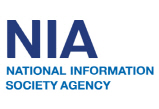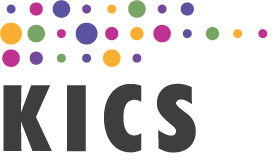Now 7 visitors
Today:749 Yesterday:874
Total: 7
323S 83P 30R
2025-11-30, Week 49 |
| Member Login |
| Welcome Message |
| Statistics |
| Committee |
| TACT Journal Homepage |
| Call for Paper |
| Paper Submission |
| Find My Paper |
| Author Homepage |
| Paper Procedure |
| FAQ |
| Registration / Invoice |
| Paper Archives |
| Outstanding Papers |
| Author Homepage |
| - Paper Procedure |
| - Journal Procedure |
| - Presentation Tips |
|
| Proceedings |
| Program with Papers |
| Plenary Session |
| Tutorial Session |
|
| Presentation Assistant |
| Hotel & Travel Info |
| About Korea |
| Accommodation |
| Transportation |
| VISA |
| Other Infomation |
|
| Photo Gallery |
| Scheduler Login |
| Seminar |
| Archives Login |
|
| Sponsors |

|

|

|

|

|

|

|

|

|

|

|

|
|
|
|
|
|
2014
 |
Title : State of the art and research challenges for USN traffic flow models |
|
Time : 17:00~18:30 Feb. 18 (Tuesday) 2014 |
|
Speaker : Prof. Andrey Koucheryavy, D.Sc. – State University of Telecommunications, St. Petersburg, Russia
A.Koucheryavy was born in Leningrad 02.02.1952. After graduated from Leningrad University of Telecommunication in 1974 he enetered the Telecommunication Research Institute named LONIIS, where he was working from 1986 to 2003 as the First Deputy Director. He became the Ph.D and D.Sc in 1982 and 1994 respectively. He is the St. Petersburg State University of Telecommunication (SUT) professor from 1998. He is SUT department “Telecommunication Networks” chief from 2011. Prof. A.Koucheryavy is the advisor of the Central Science Research Telecommunication Institute and St. Petersburg Branch of “GIPROSVYAZ” Institute simultaneously. He is honorary member of A.S.Popov society. He was the vice-chairman Study Group 11 ITU-T, Study periods 2005-2008, 2009-2012. His scientific areas of interest are the network planning, teletraffic theory, IoT and its enablers.
Abstract : The Internet of Things (IoT) is the new ITU-T concept for the network development. Things are considered as things from the nature and information worlds. The IoT is based on the Ubiquitous Sensor Network (USN). So the USN traffic models should be studied well. The traffic flow model was one of the most important investigation topic for any networks during them evolution. The traffic flow model understanding was changed from network to network, from service to service. The USN traffic flow models are in the focus of this tutorial. The telemetry, image and medical USN applications traffic flow models are investigated. The self-similarity features are determined. The practical benefits of obtained results are considered. The traffic flow type impact to the USN life-time in the different intrusion conditions is proved.
|
 |
Title : Human-Centered Workflow Intelligence |
|
Time : 16:00~17:30 Feb. 16 (Sunday) 2014 |
|
Speaker : Prof. Kwanghoon Pio Kim, PhD. - CTRL, Collaboration Technology Research Lab. Department of Computer Science, Kyonggi University, Korea
Kwanghoon Pio Kim is a full professor of computer science department at Kyonggi University, South Korea. At Kyonggi, he is a founder of the on-going Gyeonggi regional research center program, contents convergence software research center, funded by the Gyeonggi province of Korean government, and he was in charge of the director of the computerization and information institute. He received B.S. degree in computer science from Kyonggi University in 1984. And he received M.S. degree in computer science from Chungang University in 1986. He also received his M.S. and Ph.D. degrees from the computer science department at the University of Colorado Boulder, in 1994 and 1998, respectively. He had worked as researcher and developer at Aztek Engineering, American Educational Products Inc., and IBM in USA, as well as at Electronics and Telecommunications Research Institute (ETRI) in South Korea. In present, he is a vice-chair of the BPM Korea Forum. He has been in charge of a country-chair (Korea) and ERC vice-chair of the Workflow Management Coalition. His research interests include groupware, workflow systems, BPM, CSCW, collaboration theory, Grid/P2P distributed systems, workflow intelligence, process warehousing and mining, workflow-supported social networks and knowledge analysis, data intensive workflow, process-aware Internet of Things, and process-aware information systems.
Abstract : According for workflow design and automation technologies to be increasingly adopted by organizations and enterprises, new types of requirements and demands are raised in the literature. Workflow intelligence ought to be one of those newly demanded requirements. Particularly, this tutorial focuses on human-centered workflow intelligence that manages and analyzes a special type of organizational knowledge formed through the deployment and operations of workflow and BPM (business process management) technologies. The human-centered workflow intelligence deals with two types of organizational knowledge, `workflow-supported social networking knowledge’ and ‘workflow-supported affiliation networking knowledge.’ The tutorial starts from defining the basic concept of workflow intelligence, and introduces a series of theoretical formalisms and algorithms for representing, discovering, analyzing, and visualizing the new types of organizational knowledge. Additionally, the tutorial also gives a demonstration of the workflow intelligence system that is implemented in the name of ‘BPM-Sage: Human-centered organizational knowledge discovery and analytics’ by the CTRL research group at Kyonggi University.
|
 |
Title : Social Servicenics Theory : Lessons Learned from the Hype of Japanese Mobile Social Games |
|
Time : 17:00~18:30 Feb. 18 (Tuesday) 2014 |
|
Speaker : Dr. Toshihiko Yamakami – Software Solution, ACCESS, Japan
Toshihiko Yamakami is Senior Specialist, ACCESS, Chiba, Japan. He joined ACM in 1982 and now a life-time member of ACM. He obtained the master degree at Information Science, Univ. of Tokyo in 1984. He obtained the doctor of Engineering at the graduate school of Engineering, Kagawa University in 2007. His major interests include social service engineering and mobile business model engineering. From 1980s to 2000s, he was engaged in application layer standardization, CCITT, ISO, W3C, and OMA. He is also a part-time lecturer of JAIST, Japan. He published more than 150 international conference papers. He got the Yamashita-award from IPSJ in 1995.
Abstract : This tutorial summarized the past hype of Japanese mobile social games into a universal service engineering framework, so-called Social Servicenics theory. It consists of 6 stages: aesthetic values, simplicity, emotion engineering, time-dimensional engineering, social stream mining, and social experience design. It is inspired by the Gamenics theory, and extends it to cope with challenges of network-based service engineering. Social service engineering consists of two parts: a specific service engineering for a specific group and a task, a general service engineering for behavior and engagement design. The Social Servicenics theory deals with the latter part. It aims at building a general framework that facilitate service engineering in the social service era. This framework reflects the departure of the Internet from the data sharing infrastructure to social interaction infrastructure. This tutorial briefly introduces the elements inherited from persuasive technology and positive psychology with their impacts on mobile social game design.
|
 |
Title : The Convergence of Content Centric and the Internet of Things: Prospective, Challenges and Opportunities |
|
Time : 16:00~17:30 Feb. 16 (Sunday) 2014 |
|
Speaker : Prof. Dhananjay Singh, PhD, Hankuk (Korea) University of Foreign studies, Seoul, Korea
Dhananjay Singh is the Chair of the Global Division of Information Technology and an Assistant Professor in the Department of Electronics Engineering at Hankuk (Korea) University of Foreign Studies (HUFS), Seoul, South Korea. Prior to joining HUFS, He was a Senior Member of Engineering Staff of Future Internet Architecture Division at Electronics and Telecommunication Research Institute (ETRI) from 2011 until 2012 and Postdoc Researcher of Division of Fusion and Convergence at National Institute of Mathematical Sciences (NIMS), Daejeon, South Korea from 2010 - 2012. He has completed his Doctoral (Ph.D.) degree in the Department of Ubiquitous IT from Dongseo University (DSU),Busan, South Korea in March 2007 - Feb. 2010 and Master (M.Tech.) degree in the Department of Wireless Communication and Computing from Indian Institute of Information Technology, Allahabad (IIIT-Allahabad), India in July 2004 ~July 2006.
Abstract : Focus of the present tutorial is the convergence of the Content Centric and Internet of Things (IoT) towards the visualization pattern and analysis. In this concept the Future Internet Services becomes easier for the user after the processing of the raw information of the inputs receives at the main data mining station. In this tutorial concern to discuss most appropriate architectures and a systematic web server for the (Management) collections and analysis of data from different–different IoT services. This architecture introduces the use of content centric framework to encapsulate the processed information from Sensors based on sensor networks, smart embedded system having semantic logic and Semantic value based on Internet. Content Centric and IoT fusion model will infuse the capability of sensing to IoT to make the system intelligent. In this Tutorial talk are mainly focuses on following questions such as:
•What are the most appropriate architectures of IoT to support Content Centric services?
•What are the most suitable ways to the management of Global e-Healthcare Monitoring Applications?
•What is the most appropriate way to improve establish a content-centric networks of IoT services?
|
|
|
|
|
ⓒ Copyright 1999. ICACT (ISSN 1738-9445) & Global IT Research Institute(GiRI) All rights Reserved. Contact: office (at) icact . org Tel:+82-70-4146-4991
|
1713 Obelisk, 216 Seohyunno, Bundang-gu, Sungnam Kyunggi-do, Republic of Korea 13591
Business License Number : 220-82-07506, President: Thomas ByeongNam Yoon Ph.D. |
|
(13591)경기도 성남시 분당구 서현로 216 오벨리스크 1713호
(사)글로벌IT연구회 사업자등록번호 : 220-82-07506 대표자 : 윤병남
|
|
| |






